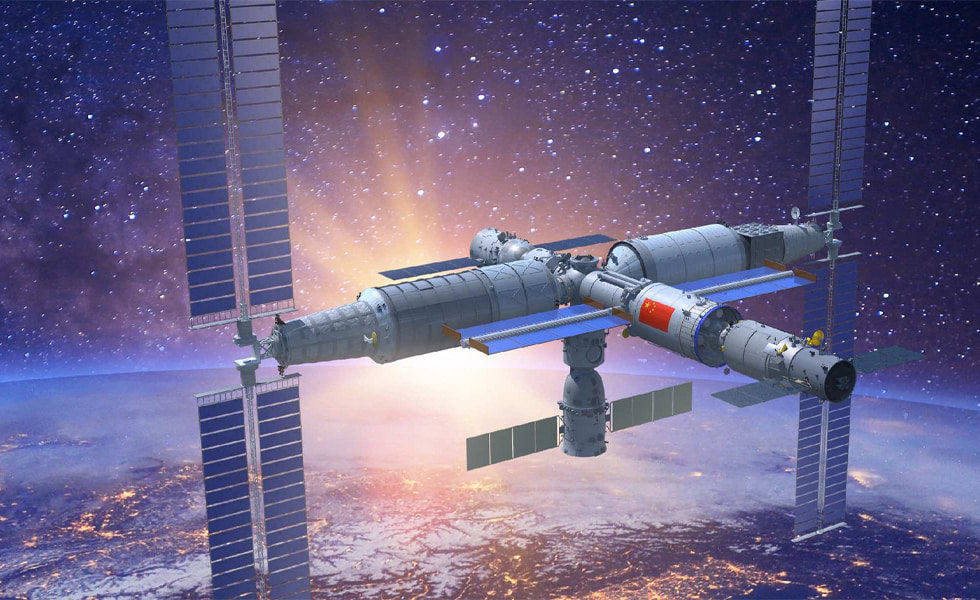
first! The spacecraft uses lithium batteries!
The power subsystem is one of the most critical systems among the 14 subsystems of the spacecraft. It can be said to be the "heart" of the spacecraft. This time, the power supply of the Shenzhou 18 manned spacecraft has been completely upgraded.
It is understood that the development team replaced the main power storage battery of the spacecraft from a cadmium-nickel battery to a lithium-ion battery. After the oxygen resistance of the diaphragm system of other power supply zinc-silver batteries was improved, the battery life was increased by 20%.
Why upgrade to lithium-ion batteries?
From Shenzhou 1 to Shenzhou 17, the spacecraft is equipped with "cadmium-nickel batteries". This kind of battery has the advantages of high safety, high reliability, resistance to overcharge and resistance to over-discharge, and can meet the requirements for high-safety operation of the Shenzhou spacecraft. Mission requirements. But it also has a disadvantage, which is the "memory effect". The "memory effect" is caused when the battery is continuously charged and discharged under low load conditions for a long time. Once the power consumption increases and returns to the full load state, the problem of insufficient power supply of the battery may occur.
However, the "memory effect" has always existed. Why did nickel-cadmium batteries work in the past but not now?
This involves another major variable in the process of my country's aerospace industry-the space station. After the space station era, the spacecraft’s stay in orbit is usually 6 months. As a result, we face two serious problems:
• The occlusion problem of the space station cabin. The connecting length of the cabins is tens of meters, and there are huge flexible solar wings, which have severely blocked the solar wings of the Shenzhou manned spacecraft, resulting in insufficient independent power generation capabilities.
• While the Shenzhou spacecraft is docked, it needs to receive power from the space station, which results in an unstable situation of constant switching of charging and discharging states, causing irregular charging and discharging problems.
In this way, there is no memory effect and the lithium-ion battery with long service life has "successfully taken over". In this way, the Shenzhou spacecraft has overcome the problem of irregular charging and discharging, gained a longer time to dock at the space station assembly, and is also safer and more reliable.
Of course, this doesn’t mean you can just change it. Because the safety of long-life and large-capacity lithium-ion batteries has been widely verified in the Tianzhou cargo spacecraft, in order to make the Shenzhou spacecraft more powerful, it has been replaced with lithium-ion batteries starting from Shenzhou 18.
The power supply system of my country's space station consists of three parts: flexible solar wings, sun orientation device, and lithium-ion battery. Among them, the main function of the flexible solar wing is to enable the space station to achieve energy freedom, while the sun-orienting device is responsible for providing stable energy.
The Tianhe core module is equipped with a set of solar cell wings with a power generation capacity of 18,000 watts, with a single wing area of 67 square meters and a double wing area of more than 130 square meters. In the lighting area, solar cell wings convert solar energy into electrical energy for use throughout the cabin.
But when the space station turns to the back of the earth, in the shadow area where the sun cannot shine, the solar cells cannot work, and the battery takes on the responsibility of powering the entire cabin.
There are 6 sets of lithium-ion batteries in the core module of the space station, each set has 66 single cells. The difficulty in using lithium batteries is to achieve overcharge protection for each single battery. In response to this problem, researchers from the 811 Institute designed an intelligent lithium battery management system to achieve high-precision, high reliability, and high safety lithium battery charging control.
The high-precision lithium battery collection and connection collection system allows for higher collection accuracy and more accurate control points; the high-efficiency, high-voltage and high-power charging module enables a three-level protection mechanism during charging to ensure the safety of electricity under any circumstances; at the same time, during the charging process Implement temperature monitoring, and when the charging temperature is higher than the set safe temperature value, the battery charging of the unit will be stopped immediately.
